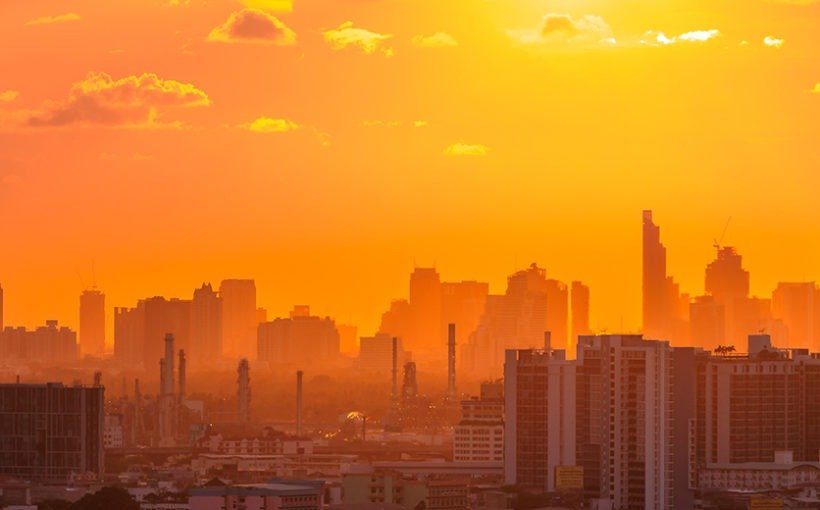In the cities, asphalt surfaces intercept the sun’s rays and store heat. As a result, the temperature of the most populated cities could increase by 8ºC by 2100. Focus on the most ground-breaking solutions.
They represent just 1% of the planet’s surface, but consume approximately 78% of the world’s energy and produce over 60% of greenhouse gas emissions from fossil fuels (gas, coal, oil). Veritable energy black holes, the big cities have their share of the responsibility for global warming. According to a study that appeared in Nature Climate Change, their temperatures could even increase by 7°C or even 8°C, by 2100.
This 5°C leap would be attributable to global warming, but the rest would be due to urban densification and specifically to the so-called urban heat island phenomenon. The more the streets are shaped like urban canyons, i.e. narrow and bordered by high walls, the less heat they will dissipate. And the higher the building structures, the more the heat of the urban canopy is trapped by a layer of cool air formed on buildings’ roofs.
It is these islands that make cities hotter than their surroundings and accentuate heat waves in them, with increased health risks, more polluted air, lower water quality and more energy expended to cool buildings. So, measures to fight against these heat islands are extremely necessary. And fortunately, the higher the temperature climbs, the more city planners, architects and engineers are demonstrating their creativity.
Cooling the cities down
In several American cities, the authorities have thus decided to use the reflective power of ground surfacing and roof coverings, i.e. the albedo. In Brooklyn, dozens of roofs have thus been painted white to increase their reflective capacity (from 20% to 85%), with the effect being an average drop in temperature inside the building shell from 46 °C to 26 °C, when the outside temperature is 32°C. In the same vein, in Los Angeles, the authorities decided to change the surfacing of Jordan Avenue – one of the hottest areas in the city – opting for a reflective white material instead of the classic tarmac. The result is that in the sunshine the temperature on the ground there falls by an average of 10ºC.
Since 2003, the city of Tokyo has returned to an ancestral tradition, that of “watering the pavements”, known as Uchimizu. To lower the street temperature, the Japanese megalopolis has been encouraging inhabitants to save rainwater to spread on the tarmac during hot periods. In Lyon, this system has been automated, and is triggered from the recordings of sensors placed a few metres above the ground. The result is that the tarmac remains at air temperature instead of 5 to 8ºC hotter when it is not watered.
But in the city, the best tool for fighting against the heat remains the trees. Powerful temperature regulators, they emit water vapour into the air. Thus, in Taiwan, a polluted city in which the subtropical climate leads citizens to prefer air-conditioned interior spaces, eco-parks have been created with devices that are more vegetable than technological. Planners have succeeded in generating “micro-climates” according to the activities carried out: a “less polluted” family route, a “dryer” sports itinerary and a “cooler” leisure itinerary. The aim being to encourage citizens to unplug the air-conditioning, come out of their homes and thus lower the city’s temperature one or two degrees.
Tags: canyon effect, covering, micro-climates, surfacing, uchimizu, urban heat islands





































